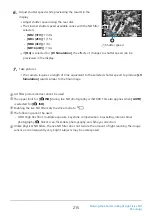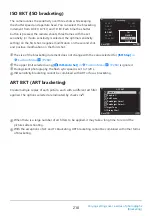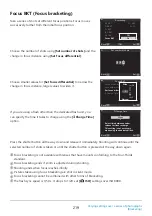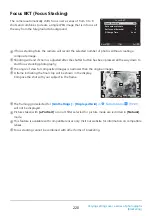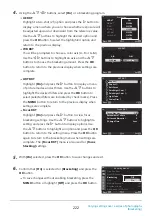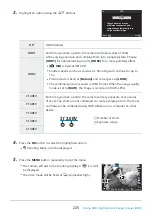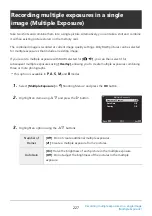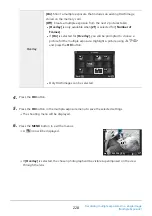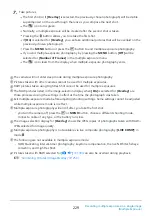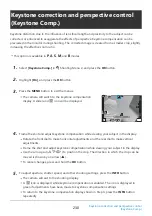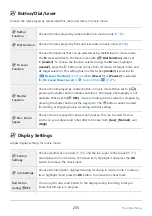
Take pictures.
The first shot (or if [Overlay] is selected, the previously-chosen photograph) will be visible
superimposed on the view through the lens as you compose the next shot.
The
W
icon turns green.
Normally, a multiple exposure will be created after the second shot is taken.
Pressing the
D
button allows you to retake the first shot.
If [On] is selected for [Overlay], you can take additional pictures that will be overlaid on the
previously-chosen photograph.
Press the MENU button or press the
q
button to end multiple-exposure photography.
If you end multiple-exposure photography by pressing the MENU button, [Off] will be
selected for [Number of Frames] in the multiple-exposure menu.
The
W
icon clears from the display when multiple-exposure photography ends.
The camera will not enter sleep mode during multiple-exposure photography.
Pictures taken with other cameras cannot be used for multiple exposures.
RAW pictures taken using High Res Shot cannot be used for multiple exposures.
The RAW pictures listed in the image-selection display when [On] is selected for [Overlay] are
those processed using the settings in effect at the time the photograph was taken.
Exit multiple-exposure mode before adjusting shooting settings. Some settings cannot be adjusted
while multiple-exposure mode is in effect.
Multiple-exposure photography will end if, after you take the first shot:
you turn the camera off, press the
q
or MENU button, choose a different shooting mode,
connect a cable of any type, or the battery runs low.
The image-selection display for [Overlay] shows the JPEG copies of photographs taken with RAW +
JPEG selected for image quality.
Multiple-exposure photography is not available via live composite photography ([LIVE COMP]) in
mode
B
.
The following are not available in multiple-exposure mode:
HDR, bracketing, interval-timer photography, keystone compensation, the live ND filter, fisheye
correction, and High Res Shot.
Pictures taken with RAW selected for
can also be overlaid during playback.
g
“Combining Pictures (Image Overlay)” (P. 256)
229
Recording multiple exposures in a single image
(Multiple Exposure)
7.
C
C
C
C
C
C
-
C
C
C
-
B

